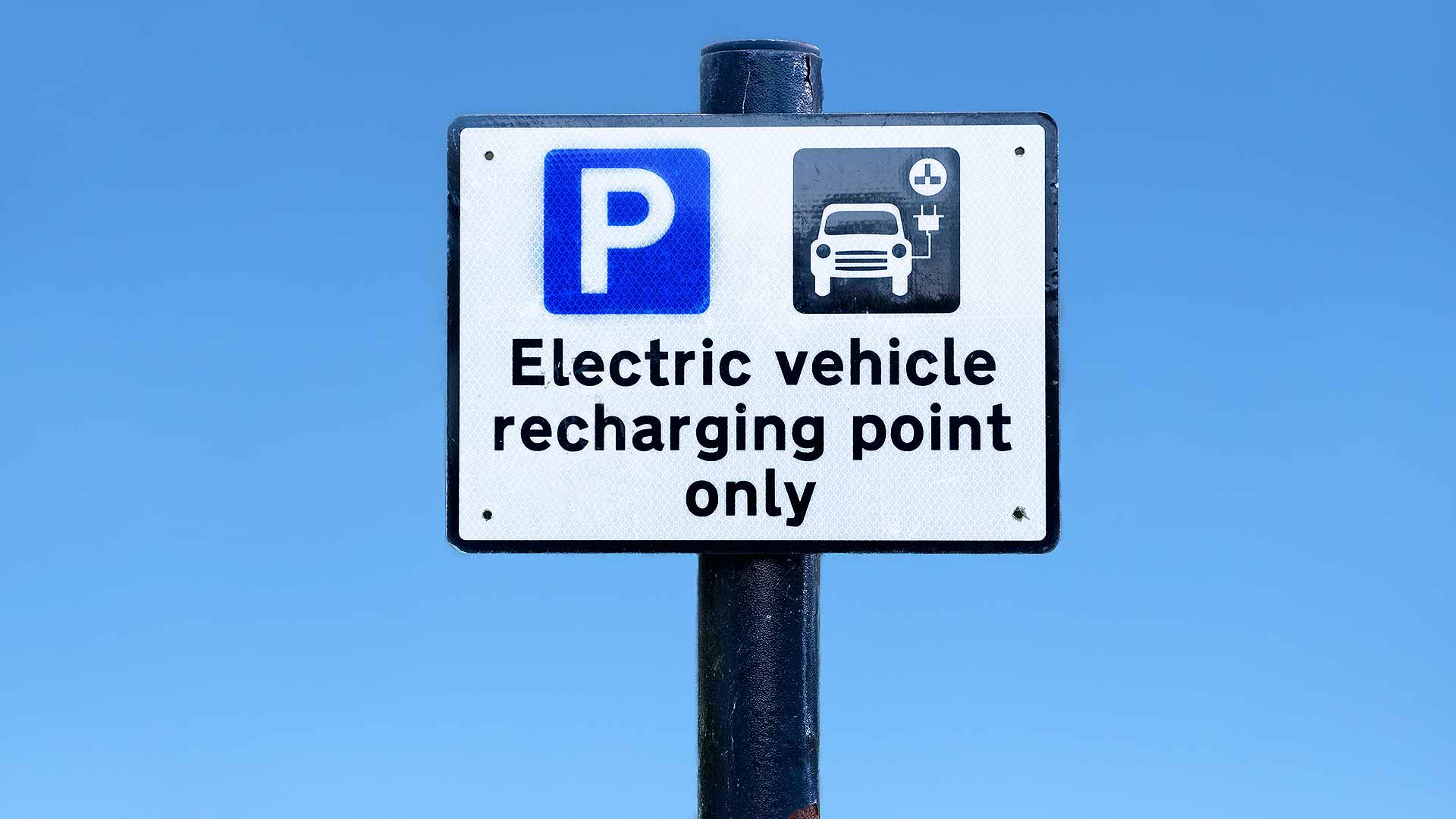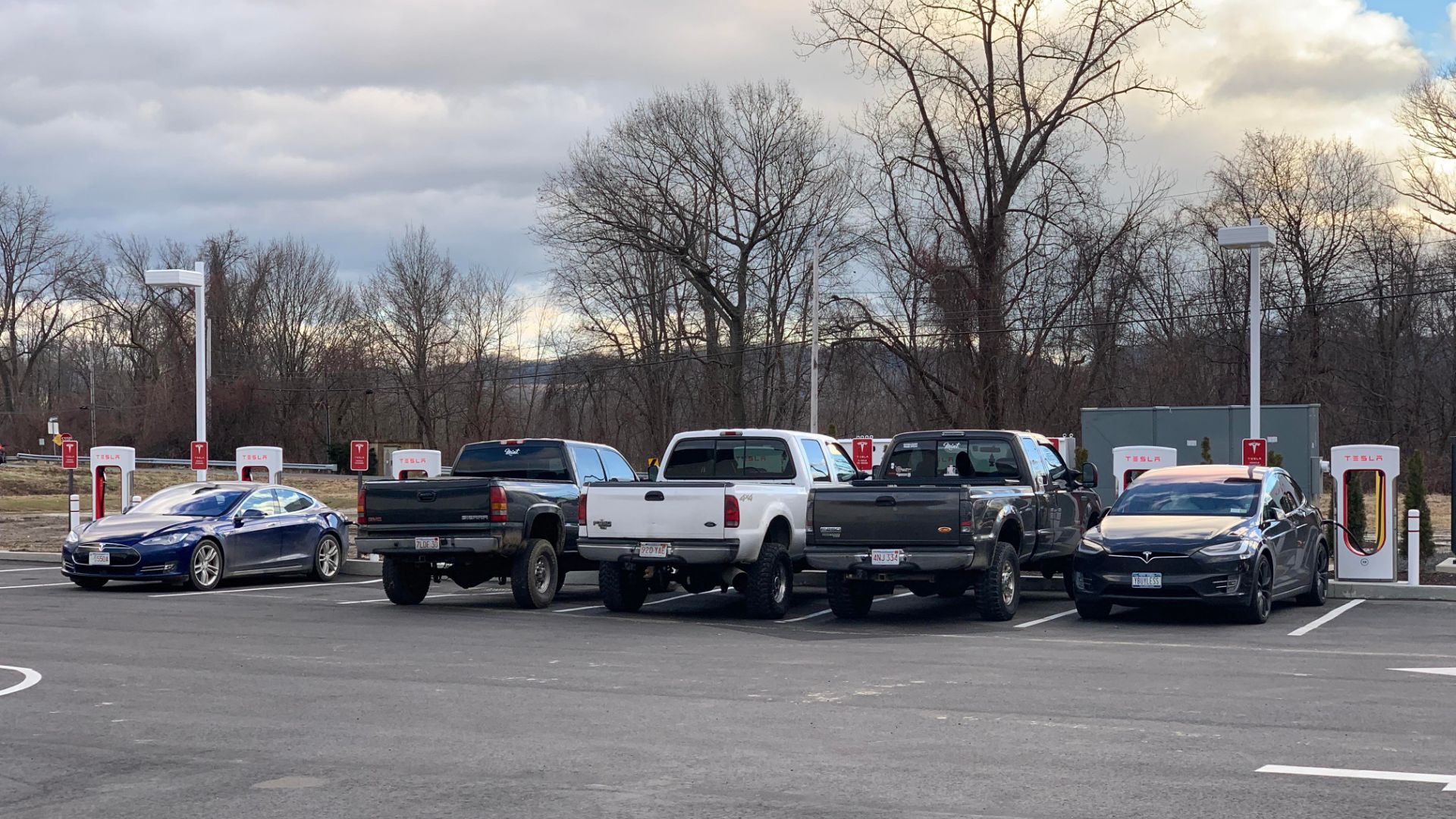
Visit an internet forum for electric car owners and ICEing is invariably one of the topics. Tesla even introduced pop-up barriers to some of its Supercharger bays to prevent the problem.
So what exactly is ICEing? You might not be familiar with the issue, so here’s a brief guide to bring you up to speed.
Most of our photos come from America, but ICEing is also prevalent in the UK. And it has nothing to do with the recent winter weather…
ICE, ICE baby

Firstly, let’s explain ICE. This is a common acronym in the car world. Confusingly, it’s used to mean both internal combustion engines (i.e. petrol or diesel) or in-car entertainment (audio systems and the like). In the context of ICEing, it’s the former.
The act of ICEing is to park in a space intended for electric cars, without making use of, or having any need for, the charger. In other words, a car with an internal combustion engine using a parking space reserved for electric cars.
It can be a hugely frustrating obstacle for EV owners looking to charge their car – the equivalent of somebody blocking a petrol pump. Drivers have reported ICEing on social media for years now. As seen in these photos, some unhelpful advocates of internal combustion appear to do it deliberately.
Taking it to Tesla

The term ‘ICEing’ was first coined in America, when repeated instances of large pick-up trucks parking in Tesla Supercharger bays were reported.
There were reports of Tesla owners being harassed by and getting abuse from truck drivers. Some even parked their trucks then mockingly clamped the chargers to the load bed.
In China, Tesla has introduced floor-locking barriers for some of its charging bays, which legitimate EV drivers can release using a QR code and a third-party app.
Charge or be charged

Technically, ICEing specifically refers to petrol- or diesel-powered cars taking electric car charging spots.
However, some charging points, such as those operated by Alfa Power, are now guarded by CCTV cameras – and anyone who doesn’t charge can expect a fine. Yes, even if they’re driving an electric car. Are you ICEing if your car is electric?
The moral of the story is, don’t park in electric car charging bays unless you have the capacity – and the intention – to charge your car. EV owners need that plug more than you do.
ALSO READ:
What do the car insurance write-off categories mean?
I didn’t know 12 year olds could get drivers licenses.
Pretty crazy they allow power wheels on public streets
Lmao. If they dont like it perhaps they should have bought a real car instead of an oversized power wheel
Found the 12 year old.
LOL “Who needs one of those fangled automobiles when we have perfectly good horses.”
No problem w ev charging stations but place them far away from store entrances. Let these green perkerheads get their exercise by walking a block to the store entrance. Don’t let these assholes take up good parking spaces that should be used by handicapped folks!
And yet another 12 year old.
I guess the tin foil hat brigade that’s always so concerned about “muh freedums” thinks they should have the right to dictate what kind of car everyone has to drive now… More proof that the far right only cares about freedom when it inconveniences them…
Doesn’t take much effort to annoy a socialist
Doesn’t take much effort to annoy a socialist…
Don’t know who mentioned socialists. Some people are just trouble makers.
Doesn’t take much effort to annoy anyone anymore